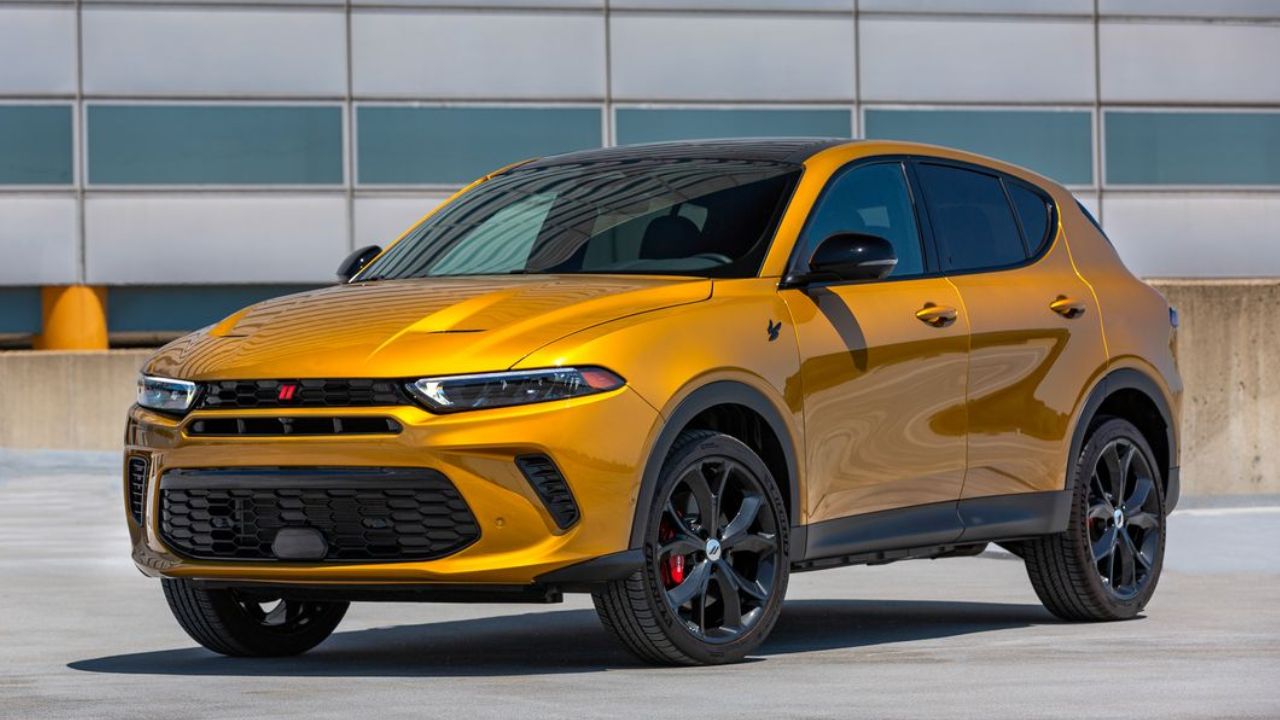The automotive landscape is shifting once again, and this time it’s hitting close to home for Dodge enthusiasts. The compact SUV that was supposed to bring some muscle car DNA to the crossover segment now finds itself caught in the crossfire of international trade policies. Let’s dive into what this means for car buyers and the automotive industry.
What’s Really Happening with the Dodge Hornet
Stellantis, the parent company behind Dodge, recently announced they’re hitting pause on the 2026 Hornet production. This isn’t just a minor delay – it’s a complete postponement while the company figures out how to navigate the new tariff landscape.
The root of the problem lies in where the Hornet is built. Unlike most American-branded vehicles, the Hornet rolls off production lines in Pomigliano d’Arco, Italy, sharing the same factory as its mechanical twin, the Alfa Romeo Tonale. This Italian connection, which once seemed like a badge of European sophistication, has now become a significant financial burden.
The Tariff Reality Check
The Trump administration’s recent tariff policies have slapped a hefty 25% import tax on vehicles coming from Europe. For a vehicle that was already struggling with pricing concerns, this additional cost creates a perfect storm. Imagine walking into a dealership expecting to pay around $31,400 for a base Hornet GT, only to discover the price has jumped significantly due to tariffs.
This isn’t just theoretical math on a spreadsheet – it’s real money coming out of real people’s pockets. Families who were considering the Hornet as their next vehicle now face a tough choice: pay substantially more or look elsewhere.
Sales Numbers Tell a Sobering Story
Even before the tariff storm hit, the Hornet was already facing challenges in the marketplace. The numbers paint a clear picture of a vehicle struggling to find its audience.
In 2024, Dodge managed to sell 20,559 Hornets – respectable for a newcomer, but far from the blockbuster success the company had hoped for. However, 2025 has been particularly brutal. In the first half of the year, only 5,647 Hornets found new homes, representing a staggering 52% drop compared to the same period in 2024.
The second quarter was especially painful, with just 1,539 units sold – a 64% decline from the previous year. These aren’t just statistics; they represent real people who decided to take their business elsewhere.
Why the Struggle?
The Hornet entered a crowded field dominated by proven players like the Toyota RAV4, which sold nearly half a million units in 2024. The compact SUV market is notoriously competitive, and breaking through requires either exceptional value, standout features, or both.
While Dodge positioned the Hornet as a “muscle car for the crossover segment,” complete with turbocharged engines and aggressive styling, it seems the market wasn’t quite ready for this particular interpretation of performance-oriented family transportation.
The Broader Impact on Dodge’s Lineup
The Hornet’s troubles don’t exist in isolation. This production halt is part of a larger reshuffling happening across Dodge’s lineup. The brand has also discontinued the base R/T trim of the Charger Daytona electric vehicle for 2026, citing similar tariff concerns.
With the Hornet on pause, Dodge’s already slim three-vehicle lineup shrinks even further. This puts enormous pressure on the remaining models – the Durango SUV and the upcoming Charger variants – to carry the brand forward.
What This Means for Dealers and Customers
If you’re currently shopping for a Hornet, you might want to act quickly. Dealer inventories are already running thin, with only 537 units of the 2024 model and 1,298 copies of the 2025 model currently available nationwide. Once these are gone, there’s no telling when or if new Hornets will arrive.
For dealers, this situation creates both challenges and opportunities. While they lose a product line, the scarcity might actually help move remaining inventory at better margins.
Looking Ahead: What Comes Next?
Stellantis hasn’t completely written off the Hornet’s future. The company maintains they’re “assessing the effects of U.S. tariff policies” before making final decisions about the 2026 model year and beyond.
This assessment period could lead to several outcomes. The company might decide to absorb some tariff costs to keep prices competitive, though this would significantly impact profit margins. Alternatively, they could explore moving production to North America, though this would require substantial investment and time.
The Canadian Connection
Interestingly, the production halt affects Canadian customers too, despite Canada not imposing additional tariffs on European vehicles. This demonstrates how interconnected the North American auto market has become – decisions driven by U.S. policy end up affecting neighbors as well.
Canadian Hornet sales, while smaller in volume, have also struggled. The vehicle moved just 1,094 units north of the border in the first quarter of 2025, down 22% from the previous year.
The Bigger Picture for American Automakers
The Hornet’s situation illustrates a broader challenge facing the automotive industry. As companies have globalized their production networks to optimize costs and capabilities, they’ve also created vulnerabilities to trade policy changes.
For consumers, this means potentially fewer choices and higher prices. For the industry, it’s forcing a reevaluation of where and how vehicles are built.
The Dodge Hornet’s story serves as a real-world example of how trade policies directly impact the cars available in American driveways. Whether this pause becomes permanent or temporary will likely depend on how trade relationships evolve in the coming months.
For now, if you’re interested in experiencing what Dodge calls “muscle car DNA in crossover form,” your window of opportunity might be closing faster than expected.
